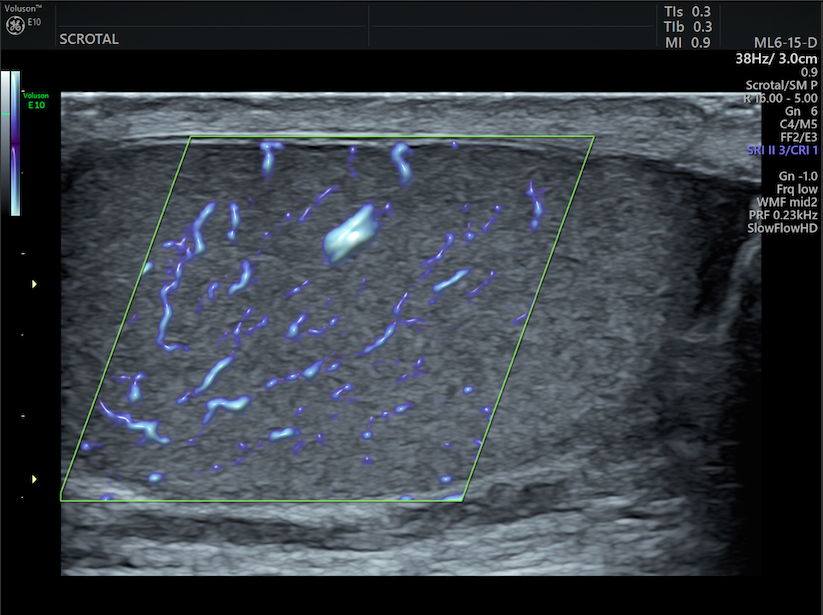Although clinicians helping patients with fertility challenges might initially focus on a female partner's uterus and adnexa, male infertility can also be a problem. In fact, according to the Society of Reproductive Surgeons, fertility concerns in men account for or contribute to an estimated 40 percent of infertility issues in heterosexual couples. When assessing male fertility, clinicians should consider some of the most common factors, many of which can be evaluated with the assistance of ultrasound technology.
Common Causes of Male Infertility
A number of chronic conditions can influence a man's fertility, mainly by affecting either sperm transport or production. The National Institutes of Health reports that problems with sperm transport account for about 10 to 20 percent of male infertility. Transport problems can be caused by natural obstructions in the vas deferens or by diseases such as cystic fibrosis, which causes some men to be born with an absent or compromised vas deferens.
However, more cases of male infertility are due to problems with sperm formation. A variety of factors can impair sperm production, ranging from chromosome defects to hormonal issues to testicular injury. Some of the most common risk factors for impaired sperm formation include:
- Cryptorchidism. When one or both testicles do not descend into the scrotum, sperm formation is affected. Men with two undescended testicles are six times more likely than their peers to experience fertility problems, according to Clinical Medicine Insights: Reproductive Health.
- Swelling of the testicles. This can occur as a result of infectious diseases such as mumps, chlamydia and gonorrhea.
- Varicocele. This enlargement of veins in the scrotum can increase scrotal temperature above the ideal levels for spermatogenesis (several degrees cooler than the rest of the body). More research is needed to determine whether varicocele definitively affects fertility.
Chronic conditions that affect fertility are not always related to the reproductive organs. Men with diabetes — type 1 diabetes in particular — can experience fertility challenges as a result of hyperglycemia. While it's still unclear exactly how hyperglycemia affects fertility, researchers suggest a number of possible causes. These include oxidative stress, damage to DNA, impaired mitochondrial function, impaired function of the hypothalamic-pituitary-gonadal axis, changes to cellular pathways and disrupted sympathetic innervation.
Evaluating Male Infertility With Ultrasound
An evaluation of male fertility should include a physical exam, sperm analysis, blood work and additional diagnostic testing if appropriate. When results suggest a problem with sperm production or transport, ultrasound technology can be a valuable tool for further assessment. Ultrasound allows clinicians to visualize the majority of the male reproductive tract easily and accurately when a physical abnormality is suspected.

A normal testicle visualized with color Doppler.
Transrectal ultrasound can help identify various ejaculatory duct obstructions. More commonly, scrotal ultrasound is used in the evaluation of varicocele, cryptorchidism and testicular masses. While definitive diagnostic criteria have yet to be established, research suggests that ultrasound is the imaging method of choice for diagnosing varicocele because of its ability to help providers count and measure enlarged veins. Transabdominal ultrasound is also important to rule out renal tumors, which can cause a sudden onset of varicocele. Likewise, ultrasound can aid the evaluation of cryptorchidism in men with fertility challenges.
When treating mixed-sex couples struggling with infertility, clinicians should keep in mind that men are as likely as women to be a contributing source of conditions that can influence fertility. Much like ultrasound can help evaluate and guide treatment in women, it can be an important approach for assessing a male partner.



